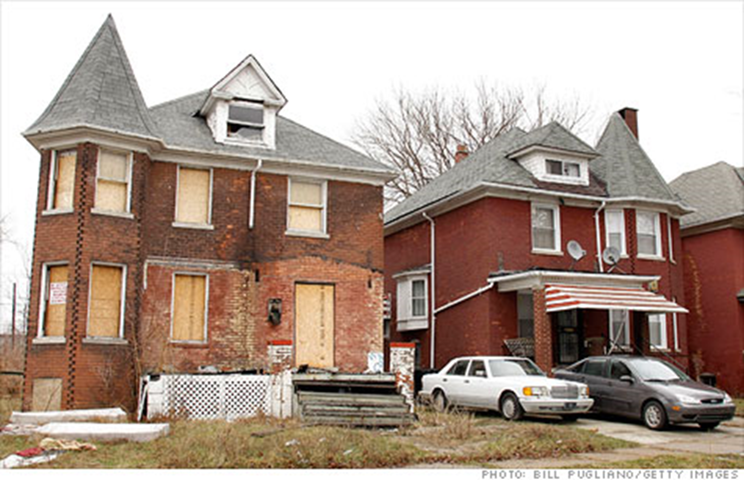Spot Blight Eminent Domain
Article Quick Links “SPOT BLIGHT” EMINENT DOMAIN BACKGROUND There has been a lot of discussion in recent years about the use of eminent domain by local government. While the use of eminent domain has long been controversial, ever since Kelo v. New London (545 U.S. 469 (2005)), municipalities have looked upon almost any use of this legal remedy as anathema to the practice of good government. In Kelo, the U.S, Supreme Court determined that the taking of land from one party for redevelopment by another was in fact a valid use of eminent domain. The public response to the Kelo decision was strong and not positive. In 2007, the New Jersey Supreme Court handed down its own answer to Kelo with their decision in Gallenthin v. Paulsboro (924 A.2d 447 (Sup. Ct., N.J., 2007)), wherein they stated that the owner of vacant land could not be forced into redevelopment, as long as their property did not contribute to the blighting of the neighborhood. All of this adverse public reaction to the U.S. Supreme Court decision has left many municipalities unwilling to even consider the use of a tool that has the words “eminent domain” in its title. Nevertheless, spot blight eminent domain (or “spot blight”, for short), is a powerful and strategic tool that can be used to improve neighborhoods for existing residents, and not simply redevelop them for the highest bidder. Spot Blight is a surgical and specific tool for the redevelopment or rehabilitation of real property. It can be used on either residential or commercial property, but cannot be used on vacant land. The tool is designed to address situations where a particular abandoned property or set of properties is adversely affecting the value of nearby occupied properties. It can only be used on properties that have been determined to be legally abandoned and thus, cannot be used to harass homeowners into giving up their property. Understanding the above is critical when designing an abandoned property policy, as it is particularly important to communicate to residents when the use of spot blight in their neighborhood is being considered.
“SPOT BLIGHT” EMINENT DOMAIN
The issue of delay is highly important with respect to abandoned properties. Delay not only leads to further deterioration of the property and higher rehabilitation costs, but it can affect the health and safety, as well as property values, of the people living nearby. Eminent domain under New Jersey’s “quick-take” rules is a relatively speedy process, and can take less than 6 months from the initial negotiations with the owner to the point where the municipality has title. Moreover, the owner may be paying taxes on the property and the municipality may not be able to use tax foreclosure against the property. As noted previously, a property can be found to be abandoned and placed on the abandoned property list even though taxes are being paid.
Step 2: The appraiser must then determine what the realistic market value will be for the property after new construction or rehabilitation, as the case may be, taking into account the market conditions particular to the neighborhood or subarea of the municipality in which the property is located (N.J.S.A.55:19-102[b]). The relevant market conditions for purposes of the appraisal are those of the immediate neighborhood or sub-area, not the city or region. This is particularly important, because in many urban areas, real estate values can change dramatically from one part of the city to the next, sometimes within a matter of a few blocks. If, under Step 1, the appraiser has analyzed both the new construction and rehabilitation options, the appraiser should determine the realistic market value at this point under both alternatives, since there may be some variation between the two values. Step 3: The appraiser must compare the costs determined in Step 1 with the post rehabilitation and/or post-construction market value determined in Step 2. If the appraiser finds that the cost exceeds the value, the law provides that “there shall be a rebuttable presumption in all proceedings under this subsection that the fair market value of the abandoned property is zero, and that no compensation is due the owner.” If, on the other hand, the appraiser finds that the market value exceeds the cost, the appraiser can look at other factors, such as comparable sales or income ratios, as long as the combined cost of the “as is” value and the cost to reuse the property do not exceed the subsequent market value. The law provides that this approach to valuation must be used in all spot blight eminent domain proceedings. Since it requires that the appraiser address questions that are not within every appraiser’s competence or knowledge base, it places the burden on the appraiser to obtain that information by seeking out individuals with specialized expertise in areas such as urban rehabilitation. Click here to view an illustration of the appraisal process for a hypothetical building that is the subject of a spot blight taking under this section of the law. QUICK-TAKE EMINENT DOMAIN Eminent domain laws in the United States follow either a ‘quick-take’ or ‘slow-take’ process. Under a quick-take process, if the municipality and the property owner cannot agree on the fair market value of the property up front, the municipality can get title to the property immediately, with the issue of value to be resolved later, sometimes - if it ends up going to court – years later. Under a slow-take process, the issue of value must be resolved first, and only then does the municipality decide whether it wants to go through with the condemnation and take title to the property. Eminent domain in New Jersey follows the quick-take process. If the municipality and the property owner do not agree on the value of the property, the municipality files a declaration of taking in Superior Court and deposits what it considers to be fair market value with the court. That action gives the municipality title to the property, unless the municipality’s right to use eminent domain in the particular case is challenged. That rarely happens, particularly if the municipality is careful about following the requirements of the law. After the municipality gets title to the property, a process spelled out in the state Eminent Domain Law (N.J.S.A. 20:3) is followed to determine the value of the property. If it is found in the end to be more than the amount deposited by the municipality with the court, the municipality must come up with the difference. |











